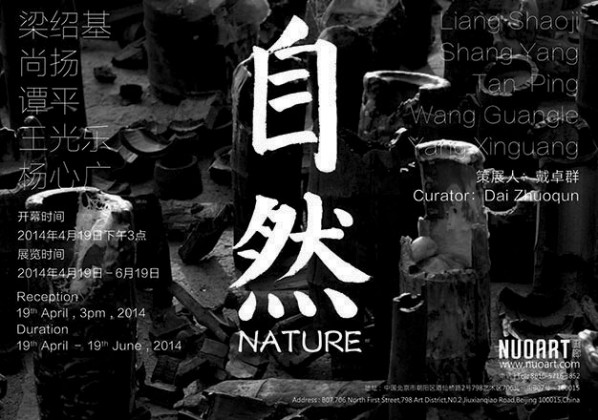
The "nature" was put forward as the exhibition concept, trying to re-evaluate the possibility of returning to common sense and knowledge exploration of the original purpose. In the twentieth century farther back to the long historical period, people believed that China's traditional art and poetry were in thrall to the nature, believing that "nature" is the art itself and continuing to deepen and extend the meaning of “nature”.
When I tried to find an appropriate language to describe today's Chinese artists’ embarrassed and stunned expression in facing the Eastern and Western cultures, I no longer felt at ease and justified to follow a set of fluent rhetoric of western art evaluation system. But for independent vocabulary and evaluation system in native context, it only has persistent and self-sufficient research in the field of ancient art. At the same time I do not intend to call the current art scene full of contradiction seemingly as Benedict Anderson’s popular “Anti-colonial Imagination”. The reason is very simple that extreme and narrow nationalism position will easily lead us to a closed fort. In this case, back to common sense will become the starting point of re-carrying out knowledge judgment and experience construction.
In fact, when we review “nature” as an object, we actually are talking about the concept of “nature”. In different cultural context subject to time and space, their ideas were presented in different and multiple manners and forms.
The concept “nature” was early established in Lao Tzu’s Tao Te Ching. The so-called “The law of the Tao is its being what it is”, that is the nature is Tao. This philosophical interpretation laid an unparalleled metaphysical status for “nature” in Chinese poetry and aesthetics at the source. Thousand years of Chinese art history is a long meandering style scroll slowly unfolding around “nature”, while the explanation of argumentation of “nature” has a systematic way from Lao Zhuang in Pre-Qin Dynasty to metaphysics in Wei and Jin dynasties and later Zen Buddhism.
However, the perception of concept of "nature" has some similarities in generation of western knowledge and Eastern wisdom. The English word “metaphysics” origins from Greek “metá”, which means after or above, while “physiká” in Greek means “nature or production of nature”, the word “metaphysica” by the combination of two wordroots means “after nature”. The Chinese translation is “Xing Er Shang Xue” which is abstracted from “That which is antecedent to Xing (the material form) exists, we say as the Dao” in "Book of Changes". This expression was translated by the Japanese Tetsujiro Inoue from word “metaphysic”. The ancient Greek philosopher Aristotle explored the eternal body behind nature in his book “Metaphysics”.
In the framework of the ancient Chinese landscape painting, the essence of painting is never rendered image of nature, but focus on mind developing around matter and clearing the mind and find rule (the highest truth of the universe). This value anyway is abstract and it is not simply associated with painting, while focuses on precise and self-contained form and language to achieve its Tao of “nature”.
The exhibition re-mentions "nature" in the present situation and considered as an approach for us to carry out the discussion of art. By presenting thoughts and experiences of artists Liang Shaoji, Shang Yang, Tan Ping, Wang Guangle and Yang Xinguang, the exhibition presents the reexamination of artistic element and reconstruction and change of new artistic style from various aspects. This discussion is mainly based on formal language so as to have the tireless quest for individual practice, which is running in infinite stretches of time and space with pioneering ideas.
About the exhibition
Curator: Dai Zhuoqun
Artists: Liang Shaoji, Shang Yang, Tan Ping, Wang Guangle, Yang Xinguang
Duration: 2014.4.19-2014.06.19
Reception: 2014.4.19 3pm
Venue: NUOART
Address: B07, 706 North First Street, 798 Art District, No.2 Jiuxianqiao Road, Beijing 100015, China
T: +86 10 5716 3852 F: +86 10 5716 3852
Courtesy of the artists and NUOART Gallery, for further information please contact NUOART Gallery via nuoartgallery@nuoart.com.


































